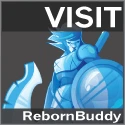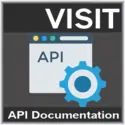Hi,
does anyone have a simple example of a WPF-based configuration control that is displayed when button is pressed from OnButtonClicked?
I have followed the sticky topic "How to Use Code-Behind/XAML for your WPF GUIs" and looked at the ExileBuddy posts and ExampleBot.
I think I'm mostly struggling with the deployment to the Bots folder and getting the GUI components to load correctly.
I haven't seen a lot of WPF-based configuration dialog for Wildbuddy Bots. So not a lot of code to look at.
-SB-
does anyone have a simple example of a WPF-based configuration control that is displayed when button is pressed from OnButtonClicked?
Code:
public interface IUIButtonProvider {
string ButtonText { get; }
void OnButtonClicked(object sender);
}I have followed the sticky topic "How to Use Code-Behind/XAML for your WPF GUIs" and looked at the ExileBuddy posts and ExampleBot.
I think I'm mostly struggling with the deployment to the Bots folder and getting the GUI components to load correctly.
Code:
System.Exception: The component 'CombatBotEx.CombatBotExGui' does not have a resource identified by the URI '/CombatBotEx;component/combatbotexgui.xaml'.
at System.Windows.Application.LoadComponent(Object component, Uri resourceLocator)
at CombatBotEx.CombatBotExGui.InitializeComponent() in c:\Games\World of Wild\CombatBotExGui.xaml:line 1
at CombatBotEx.CombatBotExGui..ctor() in c:\Games\World of Wild\Bots\CombatBotEx\CombatBotExGui.xaml.cs:line 22
at CombatBotEx.CombatBotEx.get_Control() in c:\Games\World of Wild\Bots\CombatBotEx\CombatBotEx.cs:line 154
at CombatBotEx.CombatBotEx.OnButtonClicked(Object sender) in c:\Games\World of Wild\Bots\CombatBotEx\CombatBotEx.cs:line 160I haven't seen a lot of WPF-based configuration dialog for Wildbuddy Bots. So not a lot of code to look at.
-SB-






